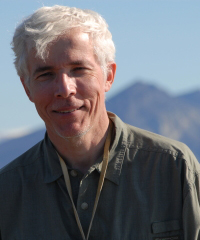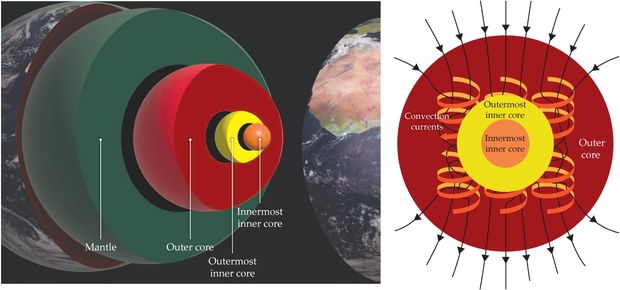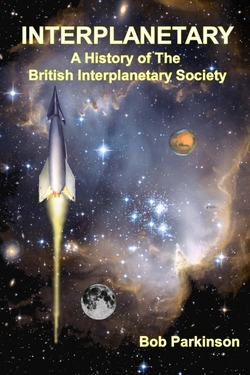The sublime, almost fearful nature of deep time sometimes awes me even more than the kind of distances we routinely discuss in these pages. Yes, the prospect of a 13.8 billion year old cosmos strung with stars and galaxies astonishes. But so too do the constant reminders of our place in the vast chronology of our planet. Simple rocks can bring me up short, as when I consider just how they were made, how long the process took, and what they imply about life.
Consider the shifts that have occurred in continents, which we can deduce from careful study at sites with varying histories. Move into northern Quebec, for example, and you can uncover rock that was found on the continent we now call Laurentia, considered a relatively stable region of the continental crust (the term for such a region is craton). Move to the Ukraine and you can investigate the geology of the continent called Baltica. Gondwana can be studied in Brazil, an obvious reminder of how much the surface has changed.

Image: With Earth’s surface constantly changing over time, we can only do snapshots to suggest some of these changes. Here is a view of the Pannotia supercontinent, showing components as they existed about 545 million years ago. Based on: Dalziel, I. W. (1997). “Neoproterozoic-Paleozoic geography and tectonics: Review, hypothesis, environmental speculation”. Geological Society of America Bulletin 109 (1): 16–42. DOI:<0016:ONPGAT>2.3.CO;2 10.1130/0016-7606(1997)109<0016:ONPGAT>2.3.CO;2. Fig. 12, p. 31. Credit: Wikimedia Commons.
Studying these matters has something of the effect of an earthquake on me. By which I mean that in the two minor earthquakes I have experienced, the sense of something taken for granted – the deep stability of the ground under my feet – suddenly became questionable. Anyone who has gone through such events knows that the initial human response is often mystification. What’s going on? And then suddenly the big picture emerges even as the quake passes.
So it can be with scientific realizations. Let’s talk about how scientists use various methods to study rock from different eras to infer changes to Earth’s magnetic field. Tiny crystal grains a mere 50 to a few hundreds of nanometers in size can hold a single magnetic domain, meaning a place where the magnetization exists in a uniform direction. Think of this as a locking in of magnetic field conditions that can be studied at various times in the planet’s history to see what the Earth’s magnetic field was doing then.

The subject is vast, and the work richly rewarding for anyone asking questions about how the planet has evolved. But now we’re learning that it also holds implications for the evolution of life. In a new feature in Physics Today, John Tarduno (University of Rochester) explains his team’s recent work on paleomagnetism, which is the study of the magnetic field throughout Earth’s history as captured in rock and sediment. For the magnetic poles move, and sometimes reverse, and within that history quite a story is emerging.
Image: The University of Rochester’s Tarduno, whose recent work explores the effects of a changing magnetic field on biological evolution. Credit: University of Rochester.
For Tarduno, the implications of some of these changes are striking. They grow out of the fact that the magnetic field, which is produced in our planet’s outer core (mostly liquid iron) continually varies, and the timescales involved can be short (mere years) or extensive (hundreds of millions of years). It’s been understood for a long time that the field reverses its polarity, but accompanying this change is the less known fact that a polarity change also decreases the field strength. Sometimes these transitions are short, but sometimes lengthy indeed.
Consider that new evidence, presented by Tarduno is this deeply researched backgrounder, shows that some 575 to 565 million years ago the Earth’s magnetic field all but collapsed, and remained collapsed for a period of tens of millions of years. If that time range piques your interest, it’s probably because this is coincident with a period known as the Avalon explosion, when macroscopic animal life, rich in complexity, begins to appear. And now we’re in the realm of evolution being spurred by magnetic field changes. The implications run to life’s own history and even as far out as SETI.

Named after the peninsula in which evidence for it was found, the Avalon explosion occurred tens of millions of years earlier than the Cambrian period which has heretofore been considered the time when complex lifeforms began to appear on Earth. It came during the Ediacaran period that preceded the Cambrian, and seems to have produced the first complex multicellular organisms. The sudden diversification of body scheme and distinct morphologies has been traced at sites in Canada as well as the UK.
Image: Archaeaspinus, a representative of phylum Proarticulata which also includes Dickinsonia, Karakhtia and numerous other organisms. They are members of the Ediacaran biota. Credit: Masahiro miyasaka / Wikimedia Commons.
So this is an ‘unexpected twist,’ as Tarduno puts it, that may relate significant evolutionary changes to the magnetic field as it reconfigured itself. Scientists studying the Ediacaran period (between 635 and 541 million years ago) have found that rocks formed then show odd magnetic directions. Some researchers concluded that the magnetic field in this period was reversing polarity, and we already knew that during a polarity reversal (the last was 800,000 years ago), the magnetic field could take on unusual shapes. Recent work shows that its strength in this period was a mere tenth of the values of today’s field.
This work was done in northern Quebec (ancient Laurentia), but later work from the Ukraine (Baltica) and Brazil showed an even lower field strength. We’re talking about a long period here of ultralow magnetic activity, perhaps 26 million years or more. Events deep inside the Earth’s inner core seem to have spurred this. I won’t go into the details about all the research on the core – it’s fascinating but would take us deeply into the weeds. For now, just consider that a consensus has been building that relates core activity to the odd Ediacaran geomagnetic field, one that correlates with a profound evolutionary event.

Image: This is Figure 2 from the paper. Caption: Changes deep inside Earth have affected the behavior of the geodynamo over time. In the fluid outer core, shown at right, convection currents (orange and yellow arrows and ribbons) form into rolls because of the Coriolis effect from the planet’s rotation and generate Earth’s magnetic field (black arrows). Structures in the mantle—for example, slabs of subducted oceanic crust, mantle plumes, and regions that are anomalously hot or dense—can affect the heat flow at the core–mantle boundary and, in turn, influence the efficiency of the geodynamo. As iron freezes onto the growing solid inner core, both latent heat of crystallization and composition buoyancy from release of light elements provide power to the geodynamo. (Left: Earth layers image adapted from Rory Cottrell, Earth surface image adapted from EUMETSAT/ESA; right: image adapted from Andrew Z. Colvin/CC BY-SA 4.0.)
In the models Tarduno describes, the Cambrian explosion itself was driven by a greater incidence of energetic solar particles during periods of weak magnetic field strength. Thus we have the basis for a weak field increasing mutation rates and stimulating evolutionary processes. Tarduno cites his own work here:
Eric Blackman, David Sibeck, and I have considered whether the linkage might be found in changes to the paleomagnetosphere. Records of the strength of the time-averaged field can be derived from paleomagnetism, whereas solar-wind pressure can be estimated using data from solar analogues of different ages. My research group and collaborators have traced the history of solar–terrestrial interactions in the past by calculating the magnetopause standoff distance, where the solar-wind pressure is balanced by the magnetic field pressure… We know that the ultralow geomagnetic fields 590 million years ago would have been associated with extraordinarily small standoff distances, some 4.2 Earth radii (today it is 10–11 Earth radii) and perhaps as low as 1.6 Earth radii during coronal mass ejection events.
As Tarduno explains, all this leads to increased oxygenation during a period of magnetic field strength diminished to an all-time low, along with an accompanying boom in the complexity of animal life from the Ediacaran leading into the Cambrian.
Notice the profound shift we are talking about here. Classically, scientists have assumed that it was the shielding effects of the magnetic field that offered life the chance to survive. Indeed, we talk about a lack of magnetic fields in exoplanets like Proxima Centauri b as being a strong danger to life because of incoming radiation. This new work is saying something profound:
If our hypothesis is correct, we will have flipped the classic idea that magnetic shielding of atmospheric loss was most important for life, at least during the Ediacaran Period: The prolonged interlude when the field almost vanished was a critical spark that accelerated evolution.
Maybe we have been too simplistic in our views of how a magnetic field influences the development and growth of lifeforms. In recent decades, work has been showing linkages between these magnetic changes, which can last for millions of years, and spurts in evolutionary activity. So that it is precisely because of low magnetic field strength, rather than in spite of it, that life suddenly explodes into new forms during these periods of high activity.
Jim Benford has often commented to me that despite having mounted the most intensive SETI search with the most powerful tools ever available, we still have not a trace of a signal from another civilization. Is it possible – and Jim was the one who pointed out this paper to me – that the reason is that the magnetic field changes that so affected life on our planet are rare elsewhere? Because it now looks as though a magnetic field should be considered less a binary situation than as a variable, one whose mutability because of core activity can take the world it engulfs into periods of low to high magnetic strength, and some eras millions of years long in which there is hardly any field at all.
I mentioned Proxima Centauri b above. Whether or not it has a magnetic field has yet to be determined, which points out how little we know about such fields around exoplanets at large. Further investigation of Earth’s magnetic past will help us understand how such fields change over time, and whether Earth’s own history has been unusually kind to evolution.
The article is Tarduno, “Earth’s magnetic dipole collapses, and life explodes,” Physics Today 78 (4) (2025), 26-33 (abstract).



There were other environmental effects at that time, including the increasing oxygenation of the oceans and atmosphere. As regards the magnetic field strength, we know that about 5 meters of water is sufficient to block the solar wind and even cosmic rays. This means that the marine life would only have been affected in very shallow water. Any deeper and the sea water itself would have shielded the life. The few Ediacaran specimens we know of are those living on the sea bottom, although we have very little idea of what they looked like or how they lived.
If magnetic variation was so important, wouldn’t we expect that reversals with periods of low strength have shown effects at other times too? In addition, the field at the magnetic poles increases the charged solar wind density. We see that as auroras. Wouldn’t this, therefore, increase the rate of evolution at the poles?
We know that radiation, especially neutrons, can damage DNA, but can also, rarely, create beneficial changes. [I’m old enough to recall that exposing seeds to nuclear radiation could change the traits of wheat. Ah, the “heady” days before we could manipulate DNA and genes.] But we also know that some organisms, notably Deinococcus radiodurans, are extremely radiation resistant. Why did this trait evolve? It would certainly counter DNA modification with increased particle density during low magnetic field strengths.
Bottom line is that I am skeptical that a grand theory to explain a burst in evolution occurred that was coincident with one example of low magnetic field strength. The events may be purely coincidental, rather than causal. Because we know so little about the organisms at that time, with no living clade members (AFAIK), the best we can do is look at the genomes of existing species ti see if there is anything indicative that something genetically important can be inferred as happening at that time.
“We know that radiation, especially neutrons, can damage DNA, but can also, rarely, create beneficial changes.”
I can see how this could be true. On a population scale, the increased death toll may be survivable during periods where the radiation also increases the rate of beneficial or neutral mutations. However, the knee in curve would soon be encountered and the population would suffer, perhaps to the point of extinction or to favor sub-populations that selectively inhabit deeper waters (5 meters, was it?).
On the broader scale of time, this smells more like a coincidence rather than a positive correlation.
Editing note: In one instance Tarduno is misspelled Carduno.
Thanks, Ron. Will fix right away.
The article link is paywalled, but these are useful: https://www.smithsonianmag.com/smart-news/earths-magnetic-field-nearly-collapsed-600-million-years-ago-then-weird-and-complex-life-evolved-180984353/ https://www.nature.com/articles/s43247-024-01360-4
The argument might be that the weak magnetic field caused hydrogen to be lost from the atmosphere, driving an increase in molecular oxygen concentration. There’s a graph in the Nature article. But the relation of this to the Baykonurian “snowball Earth” glaciation and the nutrients available to cyanobacteria… it seems like there is a lot of room for specuation.
Incidentally, Tarduno was on a different paper doing simulations suggesting that day-length variations imply an “inverse topography” of kilometers-high mountains of the mantle rising down into the Earth’s liquid outer core. https://arxiv.org/abs/2410.19934 It is interesting to consider that there is a map of the entire Earth which is just beginning to be sketched ( https://academic.oup.com/gji/article/198/1/55/604258?login=false ). It does invite vain daydreaming about what sort of silicon and metal forests and scenic hamlets might nestle among those hills.